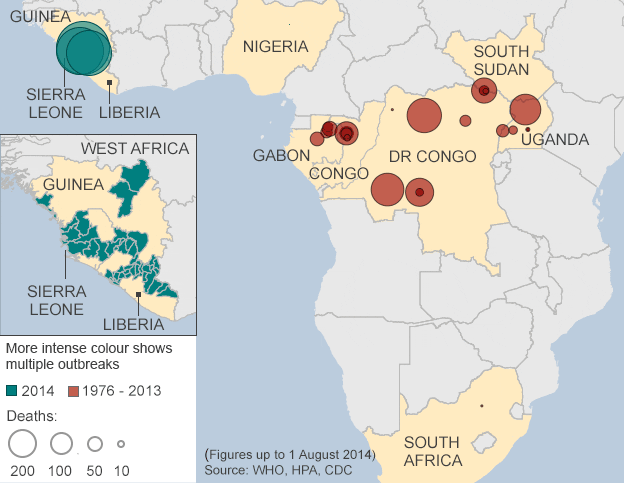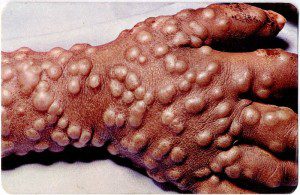
Ebola is Spreading Rapidly and is “Out of Control” in Africa
As the death toll climbs toward 1,000 in the worst Ebola outbreak in history, two American Missionaries who contracted the disease while treating patients in West Africa, were scheduled to be transported back to the United States. The physician, Kent Brantly, arrived at Emory University hospital in Atlanta, walking under his own power to a special isolation ward.
Ebola, which in its most virulent form (Ebola Zaire), has a mortality rate of up to 90% has no known cure or vaccine. The latest outbreak, which we have been covering since February, seems to have a mortality of between 50 and 70%, and is being spread by a combination of lack of awareness, poor infection control procedures in hospitals, porous borders, and local social and cultural norms, such as eating bush meat and unsanitary methods of preparing the dead for burial. Previous outbreaks have largely been limited to rural areas in Africa and although the death rates were high, the rate of transmission was slowed by preventing exposure to large populations.
Health Officials and scientists are concerned that the current outbreak involves urban centers and has apparently spread to Nigeria, the most populous country in the region.  According to the BBC:
“The medical charity Medecins Sans Frontieres (MSF) says the outbreak is “unprecedented” in the way the cases were scattered in multiple locations across Guinea, hundreds of kilometres apart, and says it is a “race against time” to check people who come into contact with sick people.”
WHO: West Africa Ebola outbreak figures released 4 August
Guinea – 358 deaths, 485 cases (including probable ones)
Liberia – 255 deaths, 468 cases (including probable ones)
Sierra Leone – 273 deaths, 646 cases (including probable ones)
Nigeria – 1 death, 4 cases (including probable ones)
Officials Decide to Bring Ebola-Infected Citizens to US for Treatment
In April we did a bio-error bio terror update raising some concerns about the number of BSL-3 and BSL-4 facilities which have proliferated throughout the country, including those working on simian viruses. There seemed to be some media confusion as to whether there was Ebola research being conducted in the continental United States, however these new experimental drugs would indicate that research on the virus within the Military and or Federal labs was ongoing for long enough to develop these serums.
Forgive our Skepticism
While it seems from reports that experimental drugs have been given to these returning American health workers, we have to seriously question the wisdom of intentionally introducing the world’s most deadly virus into the country for the first time. Although CDC scientist Dr. Tom Frieden assured the public there was little danger of the disease spreading in America because it is based on simple infection control, yes the same Dr. Frieden who was testifying before congress last month after CDC lost control of Anthrax and Smallpox viruses, we are reminded of the lack of readiness during the 2009 H1N1 outbreaks. And we are reminded that according to the CDC concerning infection control in US hospitals:
In 2011, an estimated 722,000 patients contracted an infection during a stay in an acute care hospital in the US, and about 75,000 of them died as a result of it.
In a recent post, we also quoted a Forbes article discussing the fact that up to 440,000 patients a year die in US hospitals from preventable causes, a number that has continued to increase over the years despite assurances that improvements are being made.
 We are also reminded of what happened when the NIH introduced a drug resistant superbug into one of the most important government hospitals, and could not contain it, resulting in many deaths and uncontrolled spread of the bug to this day. While proclamations about the safety of infection control and our ability to manage these types of challenges sound reassuring, evidence to the contrary is overwhelming.”
We are also reminded of what happened when the NIH introduced a drug resistant superbug into one of the most important government hospitals, and could not contain it, resulting in many deaths and uncontrolled spread of the bug to this day. While proclamations about the safety of infection control and our ability to manage these types of challenges sound reassuring, evidence to the contrary is overwhelming.”
Finally, we were caught off guard by the statement made by Dr. Frieden that it was the missionaries’ organization that “made the decision” to bring them back home for treatment. We were under the impression that CDC was responsible to keep the country safe based on their mission statement, We find it hard to believe that the decision to bring these infected patients into the US could have been made without the approval all the way up to the very top.






0 Comments